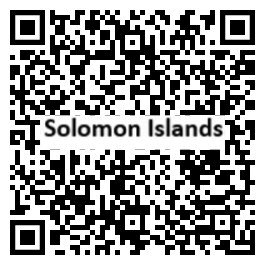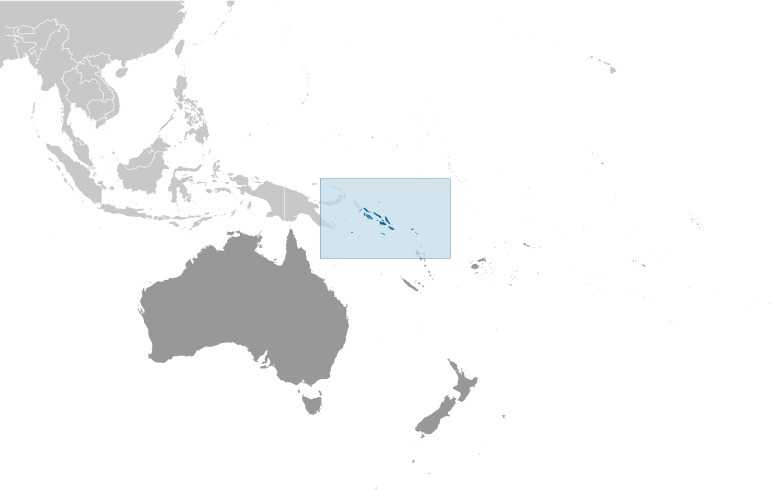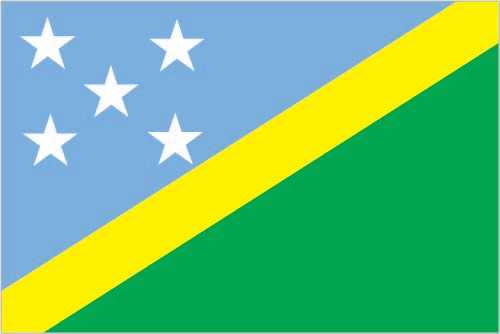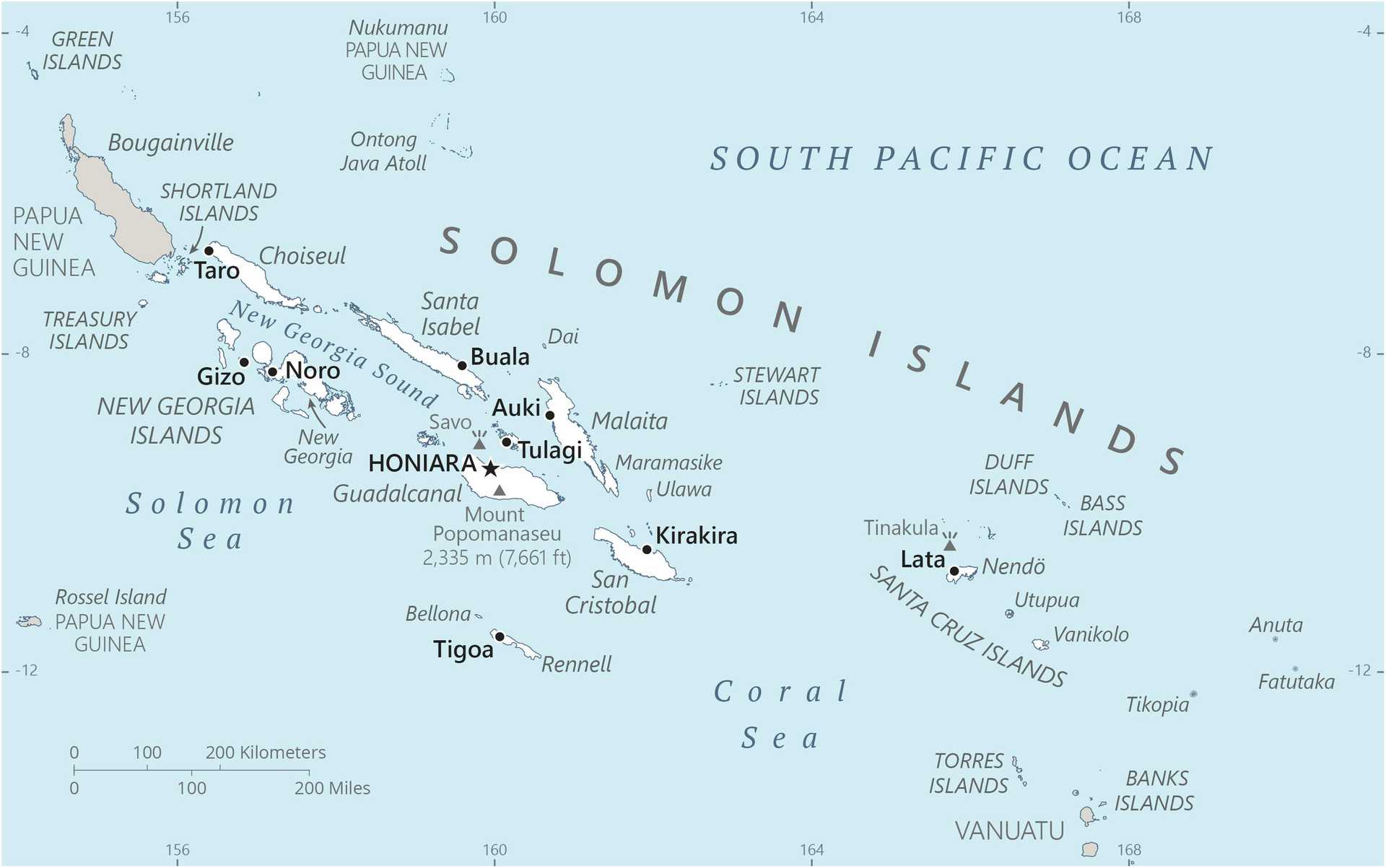Introduction
Background
The UK established a protectorate over the Solomon Islands in the 1890s. Self-government came in 1976 and independence in 1978. Ethnic violence, government malfeasance, endemic crime, and other issues undermined stability. From 2003 to 2017, the Australian-led Regional Assistance Mission to the Solomon Islands helped restore law and order and rebuild government institutions, although political tensions have continued.
Geography
Area
total: 28,896 sq km
land: 27,986 sq km
water: 910 sq km
Climate
tropical monsoon; few temperature and weather extremes
Natural resources
fish, forests, gold, bauxite, phosphates, lead, zinc, nickel
People and Society
Population
total: 726,799
male: 370,970
female: 355,829 (2024 est.)
Ethnic groups
Melanesian 95.3%, Polynesian 3.1%, Micronesian 1.2%, other 0.3% (2009 est.)
Languages
Melanesian pidgin (in much of the country is lingua franca), English (official but spoken by only 1%-2% of the population), 120 indigenous languages
Religions
Protestant 73.4% (Church of Melanesia 31.9%, South Sea Evangelical 17.1%, Seventh Day Adventist 11.7%, United Church 10.1%, Christian Fellowship Church 2.5%), Roman Catholic 19.6%, other Christian 2.9%, other 4%, unspecified 0.1% (2009 est.)
Population growth rate
1.65% (2024 est.)
Government
Government type
parliamentary democracy under a constitutional monarchy; a Commonwealth realm
Capital
name: Honiara
Executive branch
chief of state: King CHARLES III (since 8 September 2022); represented by Governor General David VUNAGI (since 8 July 2019)
head of government: Prime Minister Jeremiah MANELE (since 2 May 2024)
Legislative branch
description: unicameral National Parliament (50 seats; members directly elected in single-seat constituencies by simple majority vote to serve 4-year terms)
Economy
Economic overview
lower middle-income Pacific island economy; natural resource rich but environmentally fragile; key agrarian sector; growing Chinese economic relationship; infrastructure damage due to social unrest; metal mining operations
Real GDP (purchasing power parity)
$1.628 billion (2022 est.)
$1.697 billion (2021 est.)
$1.707 billion (2020 est.)
Real GDP per capita
$2,200 (2022 est.)
$2,400 (2021 est.)
$2,500 (2020 est.)
Agricultural products
oil palm fruit, coconuts, sweet potatoes, taro, yams, fruits, pulses, vegetables, cocoa beans, cassava (2022)
Industries
fish (tuna), mining, timber
Exports
$411.359 million (2022 est.)
$413.657 million (2021 est.)
$428.834 million (2020 est.)
Exports - partners
China 51%, India 9%, Italy 8%, Australia 5%, Netherlands 4% (2022)
Exports - commodities
wood, fish, palm oil, gold, coconut oil (2022)
Imports
$764.641 million (2022 est.)
$619.46 million (2021 est.)
$556.26 million (2020 est.)
Imports - partners
China 37%, Singapore 16%, Malaysia 12%, Australia 10%, NZ 4% (2022)
Imports - commodities
refined petroleum, plastic products, fish, iron structures, construction vehicles (2022)
Exchange rates
Solomon Islands dollars (SBD) per US dollar -
Exchange rates:
8.156 (2022 est.)
8.03 (2021 est.)
8.213 (2020 est.)
8.173 (2019 est.)
7.953 (2018 est.)
Page last updated: Thursday, June 06, 2024




